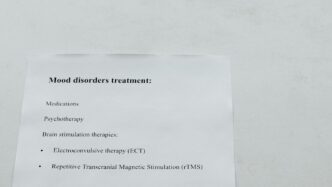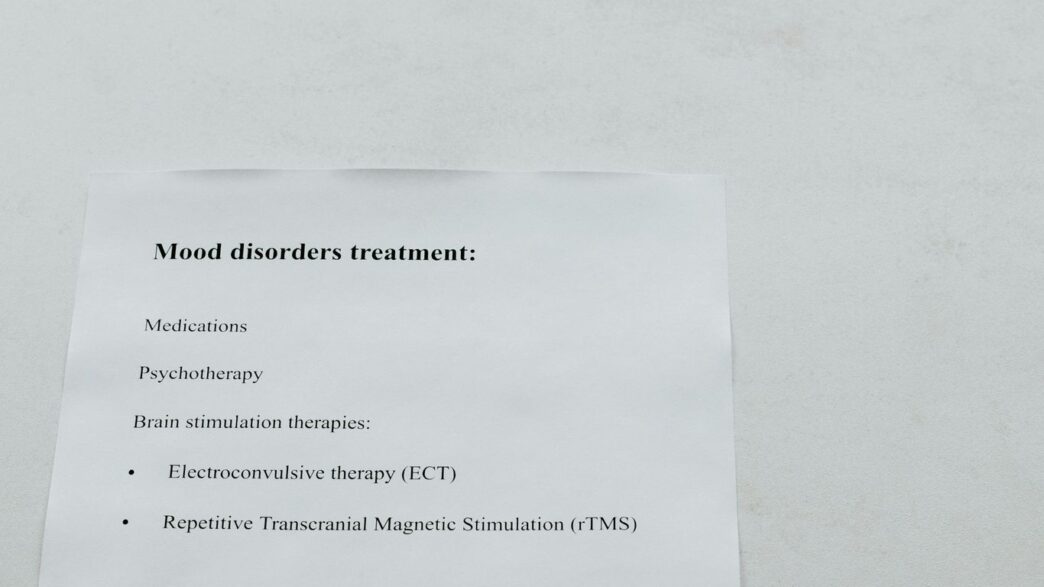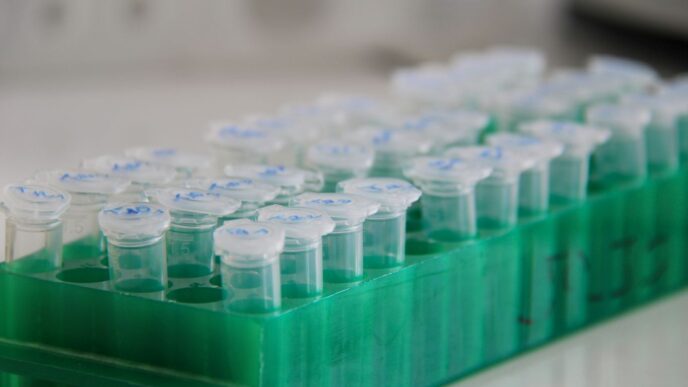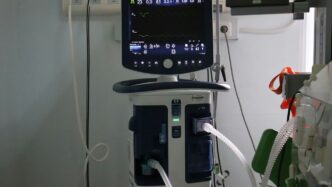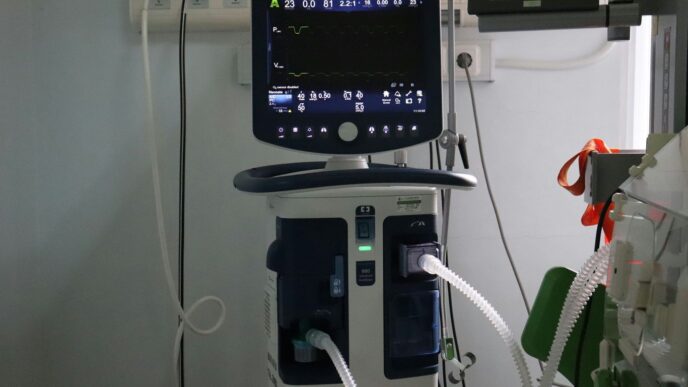It feels like everywhere you look these days, AI is popping up, and healthcare is no exception. Honestly, it’s pretty wild to think about how much this technology could change things, especially when it comes to figuring out what’s wrong with people. We’re talking about making diagnoses sharper, getting things done faster, and just generally making healthcare work better for everyone. This article is going to take a look at how ai in medical diagnostics is shaking things up, what it means for doctors and patients, and what we might see down the road. It’s a big topic, but it’s definitely worth exploring.
Key Takeaways
- AI is making medical diagnoses more accurate by spotting subtle details in images and data that humans might miss, leading to earlier disease detection.
- The use of ai in medical diagnostics is speeding up how quickly doctors can get results and automating tasks, which helps the whole healthcare system run more smoothly.
- AI helps create treatment plans that are just right for each person and can even help figure out the best medications, reducing bad reactions.
- Future AI, like quantum AI, could make diagnostics even faster and more precise, though we still need to sort out issues like data quality and bias.
- AI acts as a helpful assistant for doctors, offering insights from patient records and scans to support their decisions and improve patient care.
Enhancing Diagnostic Accuracy with AI

It’s pretty amazing how AI is changing the way doctors figure out what’s wrong with us. Think about medical images – X-rays, MRIs, CT scans. These are complex pictures, and spotting tiny issues can be tough, even for experienced eyes. AI algorithms are getting really good at looking at these images, sometimes even better than humans. They can pick up on subtle signs of disease that might otherwise be missed.
AI’s Role in Medical Imaging Analysis
AI is like a super-powered assistant for radiologists and other imaging specialists. It can sift through thousands of images, looking for patterns that indicate problems. For example, studies have shown AI systems can be quite accurate in spotting things like pneumonia on chest X-rays or identifying suspicious moles in skin images. It’s not about replacing doctors, but giving them a tool that can help them see more and see it faster. This is especially helpful when there’s a lot of work to do, or when a quick diagnosis is really important for a patient’s outcome.
Detecting Subtle Anomalies and Reducing Human Error
Let’s be honest, humans get tired, and sometimes details slip through the cracks. AI doesn’t have those limitations. It can analyze images with consistent attention to detail, which can lead to fewer mistakes. Imagine an AI flagging a tiny abnormality on a mammogram that a human might overlook due to fatigue. This isn’t just about catching more problems; it’s about catching them earlier and more reliably. For instance, some AI models have shown a significant reduction in both false positives and false negatives when analyzing mammograms for breast cancer, meaning fewer unnecessary follow-ups and fewer missed diagnoses.
Improving Early Disease Detection Through Pattern Recognition
One of AI’s biggest strengths is its ability to recognize complex patterns in data that aren’t obvious to us. By training AI on massive amounts of medical data, including images and patient histories, these systems can learn to identify early indicators of diseases. This is particularly useful for conditions where early detection makes a huge difference in treatment success, like certain types of cancer or eye diseases. The idea is to catch these diseases when they are most treatable, potentially saving lives and improving quality of life for many people.
Streamlining Healthcare Efficiency Through AI

It’s pretty wild how much AI is starting to speed things up in hospitals and clinics. You know how things can sometimes feel like they take forever? Well, AI is stepping in to change that. It’s all about making the whole process smoother, from when you first walk in the door to getting your results.
Accelerating Diagnostic Processes with AI
Think about all the tests and scans involved in figuring out what’s going on with someone. AI can look at those images, like X-rays or MRIs, way faster than a person can. It’s not just about speed, though. AI can spot tiny things that might be easy to miss, which means catching problems earlier. This is a big deal because, with many illnesses, catching them early makes a huge difference in how well someone can be treated.
Automating Administrative Tasks and Optimizing Workflows
Beyond the actual diagnosis, there’s a ton of paperwork and scheduling that goes on behind the scenes. AI is starting to take over a lot of these repetitive tasks. This could be anything from managing appointments to sorting through patient records. By automating these jobs, it frees up doctors and nurses to spend more time actually caring for patients, which is what they got into the field to do in the first place. It also helps make sure things like billing and insurance claims are handled more accurately and quickly, cutting down on errors and delays.
Reducing Healthcare Costs and Improving Resource Management
When things run more efficiently, it naturally leads to lower costs. AI helps in a few ways here. By speeding up diagnoses and catching diseases early, it can prevent more serious, expensive conditions from developing. It also helps hospitals figure out how to best use their resources, like making sure they have the right staff and equipment where and when they need it. This kind of smart management means less waste and better use of the money that goes into healthcare.
Personalized Medicine and Patient-Centric Care
It feels like we’re moving away from one-size-fits-all medicine, and AI is a big part of that shift. Instead of just treating symptoms, we’re starting to look at each person as an individual. This means figuring out the best way to help you specifically, based on all sorts of things like your genes, your history, and even your lifestyle. AI is helping doctors make treatment plans that are more likely to work and less likely to cause problems. It’s a pretty big change from how things used to be done.
Tailoring Treatment Plans with AI-Driven Insights
Think about it: your body is unique, so why should your treatment be the same as someone else’s? AI can sift through a ton of information – your medical records, genetic makeup, and even how you respond to different medications – to suggest the most fitting treatment path. It’s like having a super-smart assistant that can spot connections a human might miss. This helps doctors choose therapies that have a better chance of success for each patient.
Optimizing Medication and Minimizing Adverse Effects
We’ve all heard stories about people having bad reactions to medicine. AI can help reduce those scary moments. By looking at a patient’s specific profile, AI can predict how they might react to certain drugs. This means doctors can pick medications that are not only effective but also have a lower risk of causing side effects. It’s about getting the right drug to the right person at the right time, making treatment safer and more comfortable.
Improving Patient Engagement and Experience
When you feel like you’re part of the decision-making process, it makes a difference. AI can help by giving patients clearer information about their condition and treatment options. It can also help track progress and provide reminders, making it easier for people to stick with their care plans. This leads to a better overall experience and can help patients feel more in control of their health journey.
The Evolving Landscape of AI in Diagnostics
So, where is all this AI stuff in medicine heading? It’s not just about making current tools a bit better; we’re talking about some pretty big shifts. Think about things like quantum AI, or QAI for short. This isn’t your everyday computer; quantum computers have this massive processing power. Imagine them sifting through mountains of medical data in real-time. That could mean quicker, more accurate diagnoses than we can even dream of now. It’s like going from a bicycle to a rocket ship for data analysis.
Then there’s the idea of General AI, or GAI. This is the kind of AI that aims to understand and perform a wide range of tasks, much like a human. Companies are already working on this, hoping to make diagnoses even more precise and faster. The goal is to give doctors better insights, helping them figure out what’s going on with patients and how to treat them. It’s about making the whole system work smarter.
But it’s not all smooth sailing, of course. One of the biggest hurdles is getting good data. AI needs a lot of high-quality information to learn from, and in medicine, that data can be all over the place – incomplete, not labeled right, or just plain missing. If the data we feed AI isn’t representative of everyone, the AI can end up being biased, which is a serious problem. We also need to think about how these advanced systems will actually fit into day-to-day medical practice. It’s a complex puzzle with technical, regulatory, and ethical pieces that all need to be put in place.
Quantum AI and General AI in Medical Diagnostics
We’re seeing some really cutting-edge ideas pop up. Quantum AI, for instance, uses the power of quantum computing. This could speed up how AI models are trained and help with super-fast diagnostics. General AI, on the other hand, aims for a broader understanding, trying to tackle various diagnostic challenges. The aim is to improve accuracy, speed, and efficiency, and to provide healthcare providers with helpful insights.
Addressing Data Quality and Bias Challenges
Here’s a big one: AI needs good data. If the data used to train AI systems isn’t diverse and accurate, the AI can develop biases. This means it might not work as well for certain groups of people. Getting enough high-quality, representative data is a major challenge.
The Future of AI Integration in Clinical Practice
So, what does this all mean for doctors and patients? It means AI will likely become an even more integrated part of how we diagnose and treat illnesses. We’ll need clear rules and guidelines for how to use these tools responsibly. It’s about making sure AI helps, rather than hinders, good medical care for everyone.
AI’s Impact on Clinical Decision Support
When doctors and nurses are trying to figure out what’s going on with a patient, they often have a lot of information to sort through. Think about all the tests, scans, and patient history. It’s a lot. AI is starting to step in here, not to replace the human touch, but to act like a really smart assistant. It can look at all that data and point out things that might be easy to miss.
Providing Precise Imaging Support for Complex Procedures
Medical imaging, like MRIs and CT scans, is a big area where AI is making a difference. AI programs can be trained on thousands of images to spot tiny details that might signal a problem. For example, in looking for early signs of cancer or other diseases, AI can flag suspicious areas on a scan that a human eye might overlook, especially when things are subtle or when a doctor is looking at many scans in a day. This isn’t about AI making the final call, but about giving the radiologist or surgeon a heads-up, a second look at something that warrants closer attention. It’s like having an extra pair of highly trained eyes.
Integrating AI with Electronic Health Records
Our health information is increasingly stored digitally in Electronic Health Records (EHRs). AI can sift through these records, which often contain a mix of structured data (like lab results) and unstructured notes (like doctor’s observations). By processing this information, AI can help identify patients who might be at risk for certain conditions, suggest relevant screenings, or even flag potential drug interactions based on a patient’s full history. This integration means that the insights AI provides are grounded in the patient’s complete medical story. It helps connect the dots between different pieces of information that might otherwise remain separate.
Empowering Healthcare Professionals with Data-Driven Insights
Ultimately, AI in clinical decision support is about giving healthcare providers better tools. It’s not about taking away their judgment, but about augmenting it. Imagine a doctor trying to decide on the best treatment plan for a complex illness. AI can analyze vast amounts of research, clinical trial data, and patient outcomes from similar cases to present the doctor with a range of evidence-based options. It can also help predict how a patient might respond to different treatments or medications. This allows healthcare professionals to make more informed choices, tailored to the individual patient, leading to potentially better outcomes and a more efficient use of healthcare resources. It’s about making good decisions even better with the help of smart technology.
Looking Ahead: The AI-Powered Future of Health
So, where does all this leave us? It’s pretty clear that AI isn’t just a passing trend in medicine; it’s here to stay and is already changing how doctors diagnose illnesses and plan treatments. We’re seeing AI tools get better and better at spotting problems, sometimes even faster and more accurately than we could before. This means quicker diagnoses, more personalized care plans, and potentially, better health outcomes for all of us. Of course, it’s not all smooth sailing. There are still hurdles to clear, like making sure the data used is fair and that we’re all trained properly on these new systems. But the direction is set. As AI continues to grow and integrate into our healthcare system, it promises a future where medical care is more precise, efficient, and accessible. It’s an exciting time, and the collaboration between human medical know-how and smart technology is paving the way for a healthier tomorrow.

